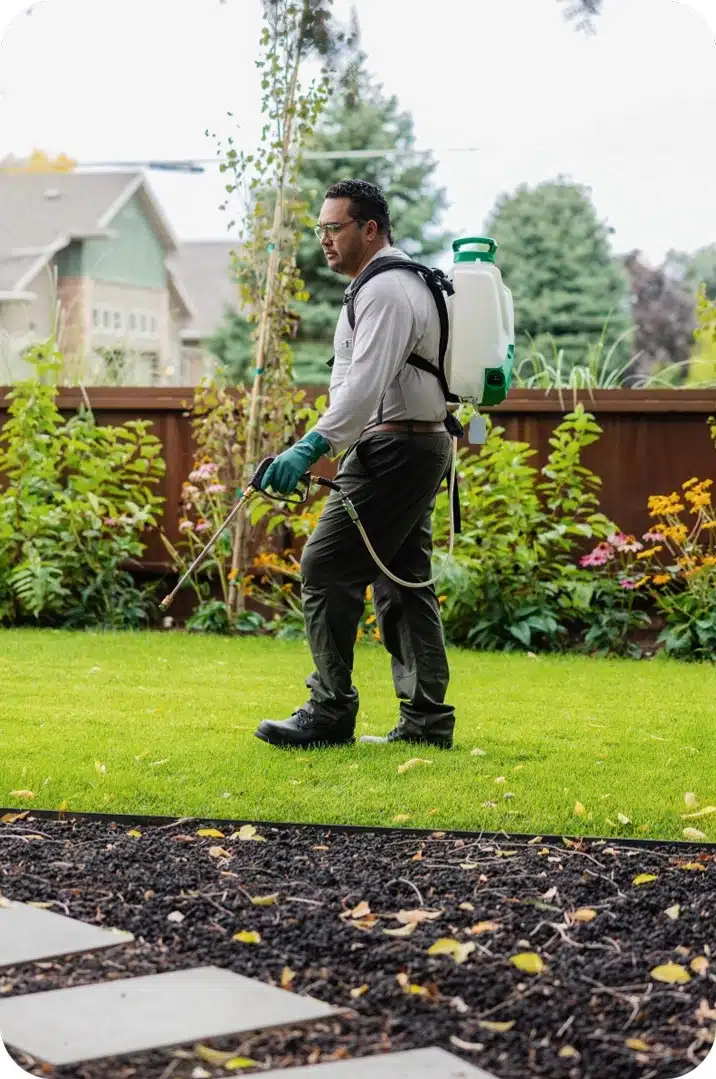A1 Pest Control Charlotte NC Bed Bugs - Expert Extermination Services
A1 Pest Control Charlotte NC Bed Bugs - Expert Extermination Services
Blog Article
Bed Insect Treatment Breakdown: Contrasting Chemical Vs. Non-Chemical Solutions
In the world of pest control, especially when taking care of the consistent issue of bed insects, the choice between chemical and non-chemical treatment solutions can be a pivotal one. Both techniques supply distinct advantages and drawbacks, influencing variables such as performance, safety considerations, and general expense. By analyzing the nuanced information of each method, a clearer understanding of which course to seek in addressing a bed insect problem can be achieved.
Effectiveness of Chemical Therapies
Chemical therapies for bed insect invasions have actually been commonly identified for their quick and powerful effectiveness in getting rid of these parasites. When taking into consideration the effectiveness of chemical therapies, it is crucial to comprehend that they can supply a extensive and fast service to a bed pest issue. Expert pest control operators frequently rely on insecticides to target bed insects at various phases of their life process, consisting of eggs, adults, and nymphs. These chemicals usually work by interrupting the bed bugs' nervous system, resulting in paralysis and eventual fatality.
Additionally, chemical therapies have the advantage of supplying recurring impacts, suggesting that they can remain to eliminate bed insects also after the first application. This residual action is specifically useful in combating any type of potential re-infestations. Furthermore, the fast action of chemical treatments can bring relief to individuals facing extreme bed insect invasions, allowing them to reclaim control of their home swiftly.
Safety And Security Worry About Chemical Solutions
One important facet that requires cautious factor to consider when using chemical options for bed insect therapy is making sure the safety and security of passengers and the setting. Exposure to specific chemicals utilized in bed insect therapies can lead to breathing issues, skin irritation, or various other adverse reactions, specifically in people with pre-existing conditions or sensitivities.
Furthermore, the ecological impact of chemical remedies is another substantial factor to consider. Some pesticides utilized in bed pest therapies may be damaging to valuable insects, wild animals, and environments if they leach right into the dirt or water supply. It is necessary to make use of chemical treatments carefully, adhering to safety and security guidelines, and considering much less poisonous options to minimize these threats and guarantee the risk-free and efficient administration of bed pest problems.
Advantages of Non-Chemical Approaches
Thinking about the potential security concerns and environmental influence connected with chemical solutions for bed bug therapy, checking out non-chemical methods provides an appealing choice with a number of unique benefits. Non-chemical treatments are ecologically pleasant, as they do not add to air or water air pollution, making them a lasting selection for insect control.
In addition, non-chemical options can be reliable in targeting bed pests, including hard-to-reach locations where chemical treatments may not pass through - A1 bed bug exterminator charlotte. Methods such as warm treatment, vacuuming, heavy steam cleaning, and cushion encasements supply thorough obliteration without the use of dangerous chemicals.
Limitations of Non-Chemical Treatments

Furthermore, non-chemical therapies typically need numerous applications to accomplish successful obliteration. This can be time-consuming and may not always ensure complete elimination of all bed bugs and their eggs, particularly in hard-to-reach or hidden places.
Moreover, the success of non-chemical therapies greatly depends on appropriate execution and thoroughness, which can be testing for people without specialist knowledge. Poor application of non-chemical methods may cause insufficient removal, resulting in persistent problems and the need for additional treatments.
Therefore, while non-chemical therapies have their advantages, it is necessary to acknowledge these constraints and consider them when determining one of the most reliable method for taking care of bed bug problems.
Cost Comparison: Chemical Vs. Non-Chemical Options
Provided the constraints related to non-chemical treatments, a crucial aspect to assess in the context of bed pest management is the expense comparison between chemical and non-chemical choices. Chemical treatments normally involve the application of pesticides by professionals, which can range from $250 to $900 per space, depending upon the seriousness of the invasion and the size of the area page to be dealt with. On the other hand, non-chemical therapies like warm therapy or vapor can be more expensive, with costs varying from $1,000 to $6,000 for an entire home. While the preliminary cost of chemical treatments may appear lower, numerous therapies may be needed to completely eliminate the problem, potentially raising the overall cost. On the various other hand, non-chemical choices might provide a much more lasting and green remedy, although they can be cost-prohibitive for some people. Inevitably, when thinking about the price of bed pest therapy alternatives, it is crucial to weigh the in advance expenses versus the effectiveness and long-term sustainability of the picked method.
Final Thought

Thinking about the potential safety concerns and ecological effect connected with chemical options for bed bug treatment, exploring non-chemical methods offers an encouraging option with several distinctive advantages.Offered the constraints connected with non-chemical treatments, an essential element to assess in the context of bed pest monitoring is the price comparison between chemical and non-chemical alternatives. In comparison, non-chemical treatments like heat treatment or steam can be a lot more expensive, with expenses ranging from $1,000 to $6,000 for a whole home. While the initial expense of chemical treatments may appear lower, multiple treatments may be needed to totally eliminate the infestation, possibly raising the total expense.In final thought, when contrasting chemical and non-chemical bed insect therapy choices, it is vital to consider efficiency, safety, advantages, constraints, and price.
Report this page